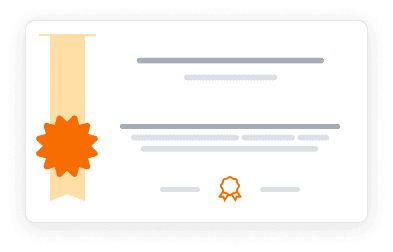This course is part of Visualización de datos: Análisis de datos con Tableau.
This intermediate-level Tableau course is designed to help users elevate their data visualization capabilities beyond the basics. Building upon fundamental Tableau knowledge, the curriculum focuses on advancing analytical complexity and quality through four specialized modules. The first module addresses data combination techniques, teaching students how to establish relationships between disparate data sources through methods like joining, blending, and unification—essential skills when working with information from multiple origins. The second module explores calculated fields and parameters, enabling students to create new dimensions and measures based on custom logic while implementing dynamic values that personalize calculations and visualizations within the workspace. The third module delves into operations at the visual level, explaining how Tableau executes calculations in a precise order that impacts analytical results. The final module covers geographic data manipulation, providing students with the tools to answer "where" questions—a critical dimension in comprehensive data analysis. Throughout the course, participants will gain practical experience in creating more sophisticated, insightful visualizations that reveal deeper patterns and relationships in complex datasets.
Instructors:
Spanish
Spanish
What you'll learn
Master data combination techniques to integrate information from multiple sources
Create calculated fields that extend your dataset with custom logic and formulas
Implement dynamic parameters to build flexible, interactive visualizations
Understand Tableau's calculation order to ensure accurate analytical results
Develop geographic visualizations that incorporate spatial dimensions into analysis
Establish relationships between disparate data sources using joins and blends
Skills you'll gain
This course includes:
PreRecorded video
Graded assessments
Access on Mobile, Tablet, Desktop
Limited Access access
Shareable certificate
Closed caption
Get a Completion Certificate
Share your certificate with prospective employers and your professional network on LinkedIn.
Created by
Provided by

Top companies offer this course to their employees
Top companies provide this course to enhance their employees' skills, ensuring they excel in handling complex projects and drive organizational success.





There are 4 modules in this course
This intermediate Tableau course builds upon foundational knowledge to develop advanced data visualization and manipulation skills. The curriculum is structured around four comprehensive modules that systematically enhance users' capabilities with this powerful business intelligence tool. The first module focuses on data combination techniques, addressing the common challenge of working with information from multiple sources. Students learn how to establish meaningful relationships between disparate datasets using methods such as joining, blending, and unification, enabling comprehensive analyses that incorporate all relevant information. The second module explores calculated fields and parameters, teaching participants how to create new dimensions and measures based on custom logic that extends beyond the original dataset. This module also covers the implementation of dynamic parameters that allow for flexible, customizable visualizations that respond to changing analytical needs. The third module examines the visual layer of Tableau analysis, with specific attention to how calculations are processed in a precise order that affects analytical outcomes. Understanding this calculation hierarchy is crucial for accurate data interpretation and advanced visualization development. The final module focuses on geographic data analysis, equipping students with the skills to incorporate spatial dimensions into their visualizations. This geographic component adds critical context to data analysis, allowing users to answer location-based questions that often drive business decisions. Throughout the course, the emphasis remains on practical application, with students learning techniques that directly enhance their ability to create sophisticated, insightful data visualizations.
El módulo 1 se dedica al tema de combinación de datos
Module 1
En el módulo 2 trabajaremos con los campos calculados y los parámetros
Module 2
El módulo 3 contiene todos los conocimientos útiles para llevar a cabo operaciones a nivel visual
Module 3
Por último, en el módulo 4 trabajaremos con los datos geográficos
Module 4
Fee Structure
Individual course purchase is not available - to enroll in this course with a certificate, you need to purchase the complete Professional Certificate Course. For enrollment and detailed fee structure, visit the following: Visualización de datos: Análisis de datos con Tableau
Payment options
Financial Aid
Instructor

3 Courses
Tableau Consultant and Data Visualization Trainer at Visualitics
Marta Gracia Verdura is a Tableau Consultant at Visualitics, where she provides business consulting, delivers training sessions, and conducts webinars focused on data visualization and business intelligence. With university studies in Spain and France, she began her career supporting entrepreneurial projects, which sparked her interest in analytics and data mining for business development. After specializing in this area, she transitioned to business intelligence consulting, helping companies leverage their data for strategic advantage. At Visualitics, she is passionate about teaching data visualization and ensuring an excellent user experience. Marta teaches the course "Introducción a la visualización de datos con Tableau," sharing her expertise with professionals seeking to enhance their analytical skills
Testimonials
Testimonials and success stories are a testament to the quality of this program and its impact on your career and learning journey. Be the first to help others make an informed decision by sharing your review of the course.
Frequently asked questions
Below are some of the most commonly asked questions about this course. We aim to provide clear and concise answers to help you better understand the course content, structure, and any other relevant information. If you have any additional questions or if your question is not listed here, please don't hesitate to reach out to our support team for further assistance.


